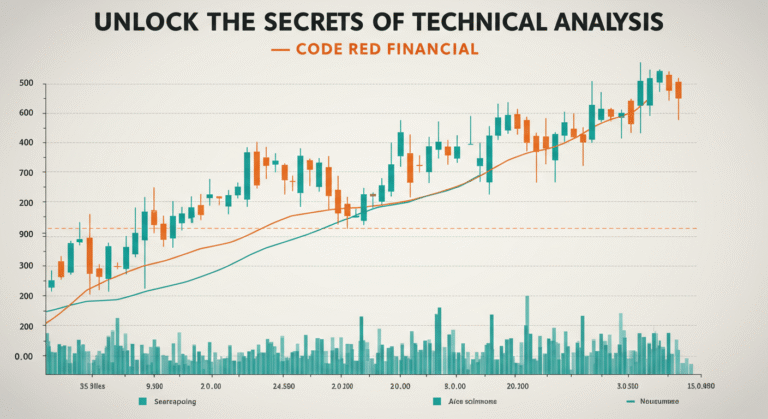Introduction to the Federal Reserve’s Interest Rate Decision
The Federal Reserve’s recent decision to reduce interest rates has garnered significant attention from economists, investors, and the general public. At the core of this decision lies a series of economic indicators and broader economic goals that the Federal Reserve aims to achieve. Primarily, reducing interest rates is a tool used to stimulate economic growth and maintain control over inflation. By lowering borrowing costs, the Federal Reserve encourages increased spending and investment by businesses and consumers alike, which can help to propel economic activity.
A key motive for reducing interest rates is to create a growth-friendly environment, especially during economic slumps or uncertain times. Lower rates can lift consumer spirits, making big-ticket items like homes and cars more affordable. At the same time, companies enjoy lower borrowing costs, which can spark expansion, new ventures, and employment opportunities. These actions collectively strengthen the economy’s ability to bounce back from low points. The latest job figures and economic updates rattled the stock market, leading many experts, like Professor Siegel from UPENN, to suggest an urgent rate cut of 0.50 basis points—a move I found unnecessary. This knee-jerk reaction triggered a massive sell-off, but the markets have since regained those losses.
Moreover, controlling inflation remains a critical aspect of the Federal Reserve’s mandate. By adjusting interest rates, the Federal Reserve can balance the demand for goods and services against the economy’s productive capacity, thereby managing price stability. In times of excessive inflation, raising rates may be necessary to cool down an overheating economy. Conversely, a reduction in rates, as seen recently, can preempt deflationary pressures, ensuring prices do not fall into a harmful spiral.
In the short term, the immediate impact of lowering interest rates often includes a boost in the stock market as investors seek higher returns amid lower bond yields. Consumer spending and business investment tend to rise, providing a jolt to economic activity. Long-term effects, however, can be more nuanced, potentially affecting savings rates, debt levels, and broader economic cycles. As such, the Federal Reserve’s decisions on interest rates are pivotal in steering the economy towards sustainable growth and stability.
Immediate Effects on Savings Accounts
The recent interest rate reduction by the Federal Reserve has triggered immediate and noticeable changes in the financial landscape, particularly pertaining to savings accounts. Traditionally, savings accounts at banks and credit unions offer interest rates that reflect the prevailing economic conditions, and as such, a cut in the federal interest rates typically results in a commensurate decrease in the interest rates for these accounts. Savers may find the annual percentage yields (APYs) on their accounts diminishing, which can significantly affect those who rely on interest income for their financial planning.
This reduction in interest rates means that the money deposited in savings accounts will grow at a slower pace. For individuals whose financial strategies depend heavily on interest income, such as retirees or those saving for significant future expenses, this can represent a substantial downturn in expected earnings. The impact is compounded in low-rate environments, where every fraction of a percentage point in interest can make a significant difference to income generated from savings.
However, there are several strategies that savers can adopt to mitigate the impact of lower interest rates. Diversifying savings into a mix of financial products such as certificates of deposit (CDs) with varying maturity dates can help in locking in higher rates before further reductions. Additionally, exploring high-yield savings accounts, often offered by online banks, may provide better rates than traditional savings accounts. Another option could be considering money market accounts, which may offer competitive rates and greater flexibility.
As savers navigate this period of reduced interest rates, it is crucial to stay informed about changes in the financial markets and potential opportunities to optimize returns. Engaging with financial advisors to reassess savings strategies can provide personalized guidance tailored to individual circumstances. By proactively adjusting savings approaches, individuals can better manage the possible adverse effects of the Federal Reserve’s recent interest rate reduction on their savings outcomes.
Impact on Fixed-Income Investments
The Federal Reserve’s recent decision to reduce interest rates has notable implications for fixed-income investments, including bonds and Certificates of Deposit (CDs). When the Federal Reserve cuts interest rates, the immediate effect is generally a decrease in yields on such investments. This is because bond yields are inversely related to bond prices; as interest rates fall, existing bonds with higher coupon rates become more attractive, driving up their prices and subsequently causing their yields to decline.
For existing bondholders, this rise in bond prices can be beneficial, potentially resulting in capital gains if the bonds are sold before maturity. However, new purchasers of bonds or CDs will face lower yields, reducing the income generated from these investments. Investors should note that the duration of a bond—its sensitivity to interest rate changes—plays a crucial role during this period. Long-term bonds are more susceptible to interest rate fluctuations compared to short-term bonds.
Adjusting the duration and credit quality of fixed-income holdings can be a strategic move in this low-interest-rate environment. Investors might consider shifting toward shorter-duration bonds to mitigate risks associated with potential rate increases in the future. Additionally, exploring bonds with higher credit ratings can provide a level of security, albeit with slightly lower yields as compared to bonds with lower credit ratings. Balancing these aspects requires a careful assessment of one’s risk tolerance and investment goals.
Another strategy worth considering involves diversifying fixed-income investments to include a mix of government and corporate bonds. Government bonds, such as Treasury securities, are generally perceived as lower risk, while corporate bonds might offer a higher yield, though they come with increased risk. This combination can potentially balance the pursuit of yield with the need for stability.
Finally, laddering, a time-tested strategy that involves purchasing several bonds with staggered maturities, can also help mitigate interest rate risks. By ensuring that part of the portfolio is maturing periodically, investors have the flexibility to reinvest the proceeds in new bonds with potentially higher rates should interest rates rise in the future.
Opportunities and Risks in the Stock Market
The Federal Reserve’s recent reduction in interest rates has significant implications for the stock market, presenting both opportunities and risks. On one hand, lower interest rates reduce the cost of borrowing for companies, which can lead to increased capital investment, expansion, and improved corporate earnings. When businesses can finance growth more cheaply, it often translates into higher stock prices, making the stock market an attractive avenue for potential gains.
Moreover, as interest rates decline, fixed-income securities like bonds become less attractive, driving investors toward stocks in search of better returns. This influx of capital can boost share prices, particularly in sectors that are highly sensitive to changes in interest rates. For example, the real estate and construction sectors are likely beneficiaries, as lower borrowing costs can spur new development projects. Similarly, consumer discretionary and technology sectors may also see gains, given their reliance on consumer spending and capital expenditures, respectively.
However, these opportunities come with notable risks. One major concern is the potential for inflated asset prices. As stock prices rise due to increased demand, there is a risk of creating market bubbles. Investors may end up overpaying for stocks, which could lead to steep corrections if market conditions change or if corporate earnings fail to meet expectations.
Another critical risk stems from heightened market volatility. Reduced interest rates often lead to increased speculation, as investors search for higher returns. This speculative behavior can exacerbate market swings, making it challenging for investors to navigate the turbulence. Additionally, sectors that benefit in the short term from reduced rates may face long-term challenges if economic conditions do not stabilize or if interest rates were to unexpectedly rise again.
To mitigate these risks, investors should consider diversifying their portfolios and balancing their exposure to various sectors. Maintaining a mix of conservative and aggressive investments can help manage risk while still allowing for potential growth. Additionally, focusing on companies with strong fundamentals and a proven track record of navigating economic fluctuations can provide a buffer against volatility. By strategically analyzing both opportunities and risks, investors can better position themselves to capitalize on the changing landscape of the stock market in the wake of the Federal Reserve’s interest rate reduction.
Real Estate and Mortgage Considerations
In the realm of real estate, the Federal Reserve’s recent interest rate reduction can have significant ramifications for both home buyers and real estate investors. Reduced interest rates generally lead to more affordable mortgage options. Prospective homeowners may find themselves in a better position to buy properties as lower rates can diminish monthly mortgage payments and reduce the overall cost of borrowing. Consequently, this can stimulate demand within the real estate market, potentially driving property prices higher.
For current homeowners, lower interest rates offer an attractive opportunity to refinance existing mortgages. Refinancing can lock in a lower interest rate, reducing monthly payments, and decreasing the total amount paid over the life of the loan. It’s advisable for homeowners to evaluate their current mortgage rates and consider refinancing if the new rates present substantial savings. This involves an assessment of factors such as the remaining loan term, closing costs, and the break-even period to ensure refinancing is financially advantageous.
Meanwhile, real estate investors can also benefit from reduced interest rates. Cheaper borrowing costs may enable investors to acquire properties at lower finance charges, enhancing their return on investment. Additionally, the potential for rising property values in a stimulated market can offer long-term gains. However, it is critical for investors to conduct thorough due diligence and risk assessments, particularly in terms of market stability and rental income projections.
Timing is essential when considering property purchases in a low-interest-rate environment. Buyers should stay informed about market trends and rate projections, collaborating with financial advisors to make informed decisions. Market dynamics can shift rapidly, and being prepared to act can mean the difference between a profitable investment and a missed opportunity.
In summary, lower interest rates present multiple opportunities for buyers and investors in the real estate market. By carefully analyzing these opportunities and consulting with financial experts, individuals can make strategic decisions that align with their financial goals and enhance their overall portfolios.
Adjusting Your Investment Strategy
The recent interest rate reduction by the Federal Reserve necessitates a strategic adjustment to your investment portfolio. One of the primary steps in response to this change is to ensure a well-diversified investment strategy. Diversification across various asset classes can mitigate potential risks associated with low-interest environments. In this context, it may be prudent to allocate a portion of your portfolio to assets less influenced by interest rate fluctuations, such as commodities, real estate, or alternative investments. This approach can provide a buffer against market volatility and potentially yield better returns.
Maintaining a balanced portfolio is crucial during periods of monetary policy shifts. This involves a mixed allocation of stocks, bonds, and other asset types to cushion against adverse market movements. Equities may offer growth potential, especially in sectors that traditionally perform well during low-interest periods, like technology and consumer staples. Conversely, bonds with shorter maturities or those linked to inflation are preferred to reduce interest rate sensitivity.
Another critical aspect is reassessing your risk tolerance. The current economic climate might prompt a reassessment of how much risk you are willing and able to tolerate within your investments. An evaluation of your financial goals, investment horizon, and market outlook is essential to align your risk profile with your investment strategy accurately.
Staying informed about potential future monetary policy changes is fundamental for successful portfolio management. Regularly following Federal Reserve announcements and economic indicators will help you anticipate market trends and make preemptive adjustments to your investments. Leveraging the expertise of financial advisors or utilizing investment tools can provide insights into how best to navigate the current market conditions.
Regular portfolio reviews are imperative to ensure your investment strategy remains aligned with your financial objectives and risk tolerance. This practice allows you to make necessary adjustments in response to evolving market conditions, optimizing your investment strategy for both current and future financial goals.








